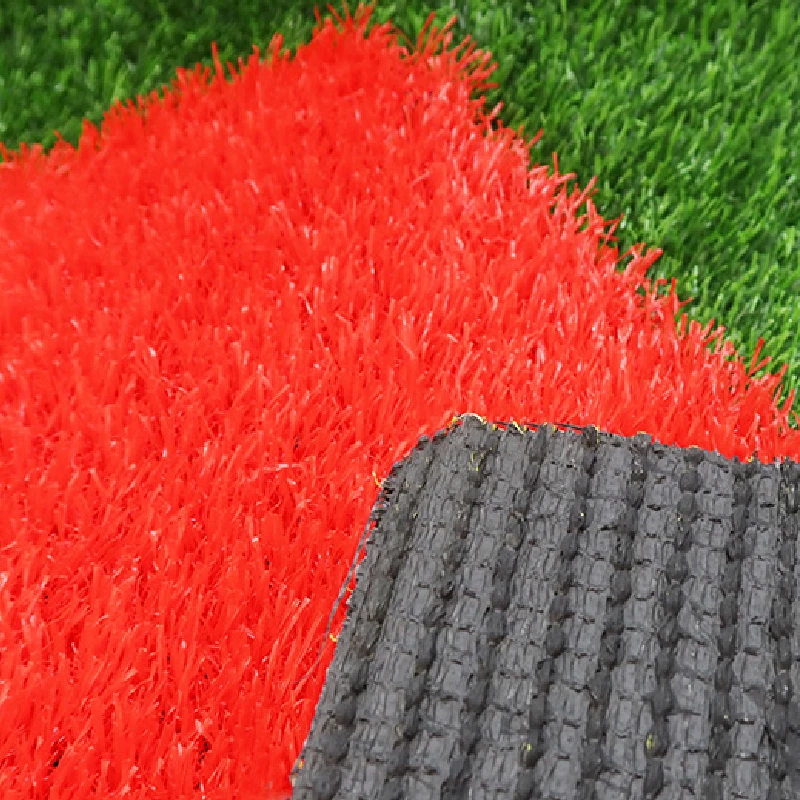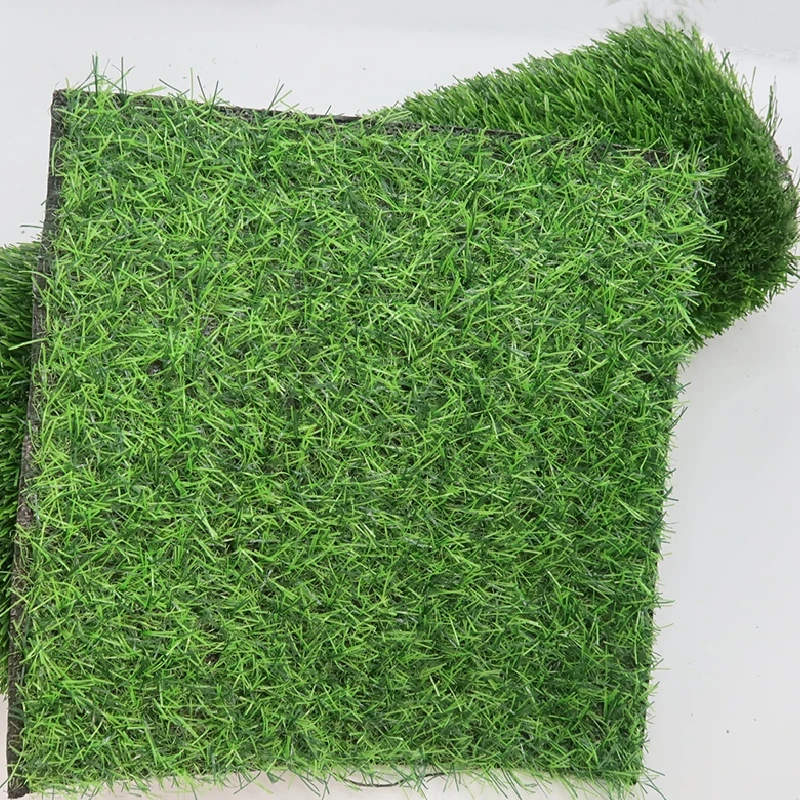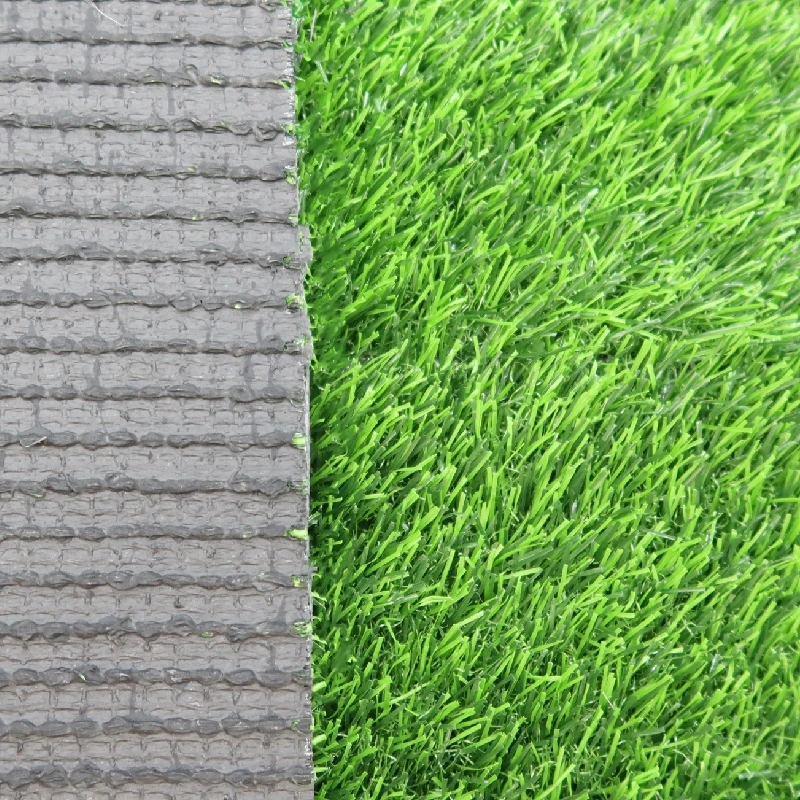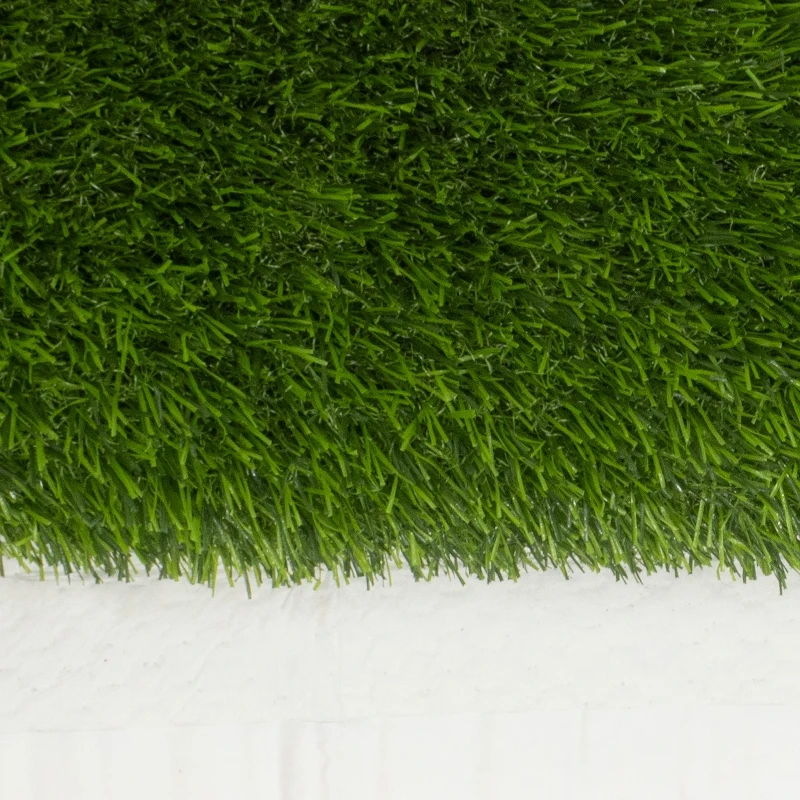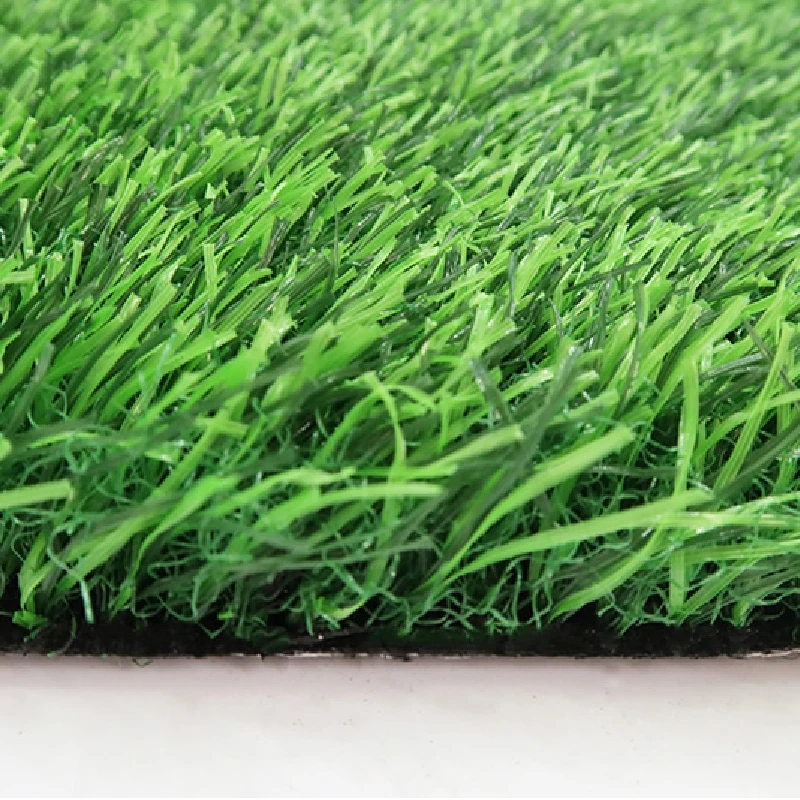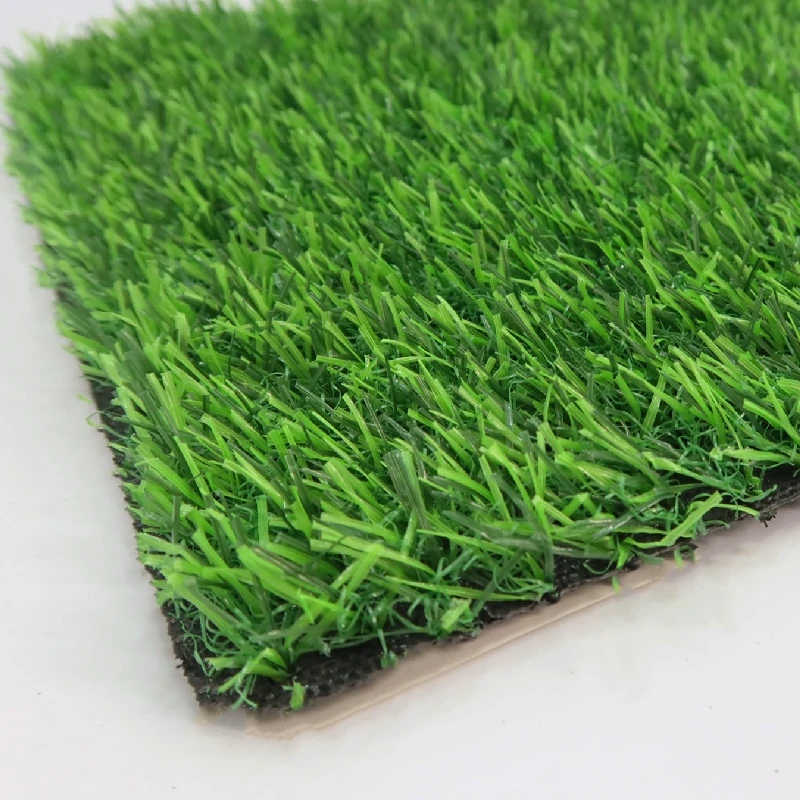Lifelike Artificial Grass: Durable, Low-Maintenance Beauty
Sep . 11, 2025 10:00 Back to list
The Evolution and Impact of Artificial Grass in Modern Design
In contemporary architectural and interior design, the integration of sustainable and aesthetically pleasing elements is paramount. Among these, artificial grass has emerged as a transformative solution, offering unparalleled versatility and low maintenance for a myriad of applications. This section delves into the evolving landscape of synthetic turf, particularly its significant impact on interior decoration and commercial landscaping. Market analysis indicates a robust growth trajectory for the global artificial turf market, projected to reach USD 7.8 billion by 2027, with a compound annual growth rate (CAGR) of 6.7% from 2020 to 2027, driven by increasing adoption in sports, leisure, and commercial sectors, as reported by MarketsandMarkets.
Initially conceived for sports arenas, the technological advancements in polymer science and manufacturing processes have propelled artificial grass into diverse markets, including residential gardens, playgrounds, and increasingly, high-end interior design. The demand for `fake grass for decoration` is escalating as businesses and institutions seek to incorporate biophilic design principles without the operational overheads associated with natural vegetation. This trend is particularly pronounced in urban environments where access to natural green spaces is limited, making `artificial grass interior` solutions highly attractive.
The drive towards eco-friendly building materials also plays a crucial role. While traditional perceptions might view synthetic products as less sustainable, modern `artificial grass` production increasingly utilizes recycled materials and designs for enhanced durability, reducing the need for frequent replacement. This strategic shift aligns with corporate sustainability goals, offering a compelling proposition for B2B decision-makers evaluating long-term operational costs and environmental impact, including reduced water consumption and chemical usage compared to natural lawns.
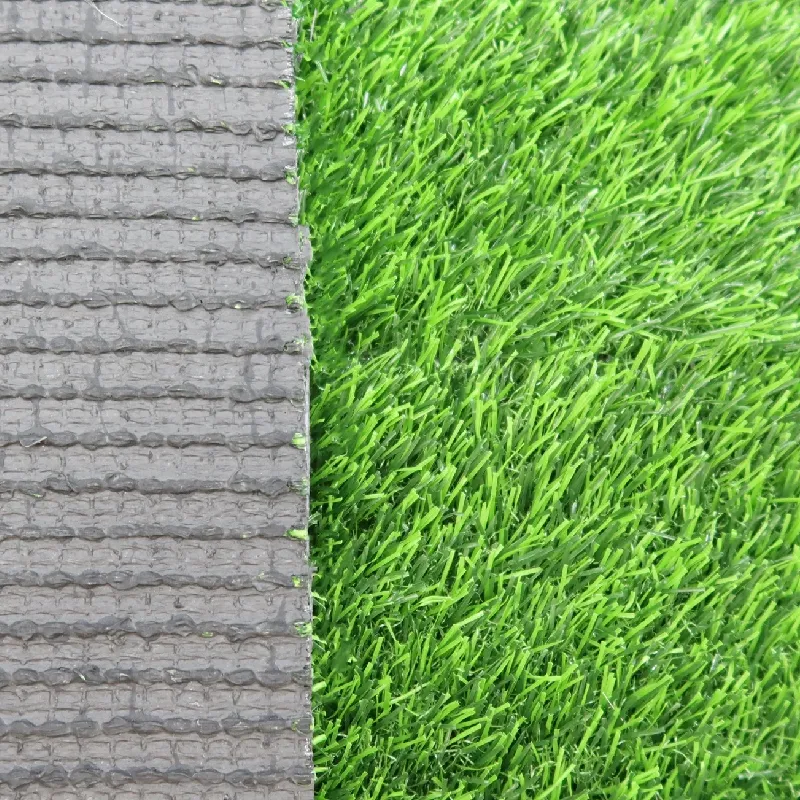
Modern interior design integrating high-quality artificial grass for a vibrant aesthetic.
Manufacturing Process: From Polymer to Pristine Turf
The production of high-quality artificial grass is a sophisticated industrial process involving precision engineering and material science. This intricate manufacturing flow ensures the final product meets stringent performance and aesthetic criteria for diverse applications, from high-traffic commercial spaces to delicate interior installations.
Key Materials and Their Properties:
- Polyethylene (PE): Widely used for its soft texture and realistic appearance, offering excellent UV stability and resilience. Ideal for applications requiring a natural feel, such as `artificial grass interior` designs. Its low friction coefficient also contributes to safety.
- Polypropylene (PP): Known for its robust durability and resistance to wear, often used for thatch layers (the curly brown/green fibers at the base) or in high-traffic zones. Offers good dimensional stability and cost-effectiveness.
- Nylon (Polyamide): The strongest and most durable synthetic fiber, providing superior resilience and memory. Often blended with PE for enhanced performance in premium products where exceptional uprightness and longevity are required.
- Latex or Polyurethane (PU) Backing: Provides structural integrity, tuft lock (securing the yarn to the backing), and dimensional stability. PU backing offers superior drainage, flexibility, and resistance to temperature fluctuations, crucial for outdoor and commercial applications, while SBR (Styrene Butadiene Rubber) latex is a cost-effective alternative often used for interior products.
Manufacturing Process Flow:
- 1. Extrusion of Yarn: Raw polymer pellets (PE, PP, or Nylon) are melted and extruded through a spinneret (a die with multiple small holes) to form continuous filaments. These filaments are then stretched and texturized (e.g., fibrillated, monofilament, or slit-film) to create the desired blade shape, thickness, and feel. Crucially, additives for UV stabilization, anti-static properties, and colorants are integrated at this stage to ensure durability and aesthetic consistency.
- 2. Twisting and Heat Setting: The extruded yarns are twisted together to form bundles, which are then subjected to heat setting. This thermal process imparts "memory" to the fibers, ensuring they stand upright and maintain their shape after compression, which is a critical factor for the longevity and natural appearance of `fake grass for decoration`. This step is analogous to annealing in metallurgy, stabilizing the material structure.
- 3. Tufting: Large industrial tufting machines use multiple needles to stitch the yarn bundles into a primary backing fabric, typically a robust woven polypropylene (PP) material. The needles pierce the backing and loop the yarn, forming rows of artificial grass blades. The density, pile height (blade length), and gauge (distance between stitch rows) are controlled meticulously during this stage, defining the turf's plushness and appearance.
- 4. Coating and Backing Application: After tufting, the reverse side of the primary backing is coated with a liquid SBR latex or polyurethane (PU) compound. This coating serves two primary purposes: securely locking the tufted fibers in place (tuft bind strength), preventing shedding, and adding crucial structural stability and dimensional integrity to the entire mat. Curing ovens then dry and set the coating under controlled temperatures.
- 5. Perforation (for drainage): For applications requiring drainage (e.g., outdoor, areas prone to spills), the backing is perforated with small, evenly spaced holes to allow water to pass through and prevent pooling. While less critical for purely `artificial grass interior` applications where water exposure is minimal, it's a standard step for versatile products.
- 6. Quality Control and Finishing: The finished rolls undergo rigorous testing for tuft bind strength (ASTM D7658), tensile strength, UV resistance (ASTM G154), and overall aesthetic consistency. Rolls are then trimmed, cut to standard dimensions (e.g., 2m or 4m wide), packaged, and prepared for dispatch. Adherence to ISO 9001 quality management standards is verified at this stage.
Testing Standards and Service Life:
Adherence to international standards is critical for ensuring product quality, safety, and longevity. Key testing standards for artificial grass include:
- ISO 9001: Certification for quality management systems throughout the manufacturing process, ensuring consistent product output.
- ISO 14001: Environmental management system certification, emphasizing sustainable practices and minimized environmental impact.
- ASTM F1551: Standard Test Methods for Composite Properties of `Artificial Turf` Systems, covering aspects like pile height, infill depth, and wear resistance.
- EN 1177: Impact attenuating playground surfacing, critical for safety in play areas by assessing critical fall height.
- UV Stability Testing (e.g., ASTM G154 / QUV accelerated weathering): Ensures color retention and material integrity under prolonged sun exposure, crucial for preventing degradation and maintaining aesthetic appeal.
- Flame Retardancy (e.g., EN 13501-1 Class Efl-s1): Essential for `artificial grass interior` applications to meet stringent fire safety regulations for public and commercial buildings.
- REACH & RoHS Compliance: Certifications for absence of harmful substances, ensuring product safety and environmental responsibility.
With proper installation and maintenance, high-quality artificial grass products typically boast a service life of 8-15 years, significantly outperforming natural turf in demanding environments. This longevity translates to substantial long-term cost savings for businesses in sectors such as petrochemical, metallurgy, and water supply & drainage, not just in maintenance but also in infrastructure resilience where conventional landscaping struggles.
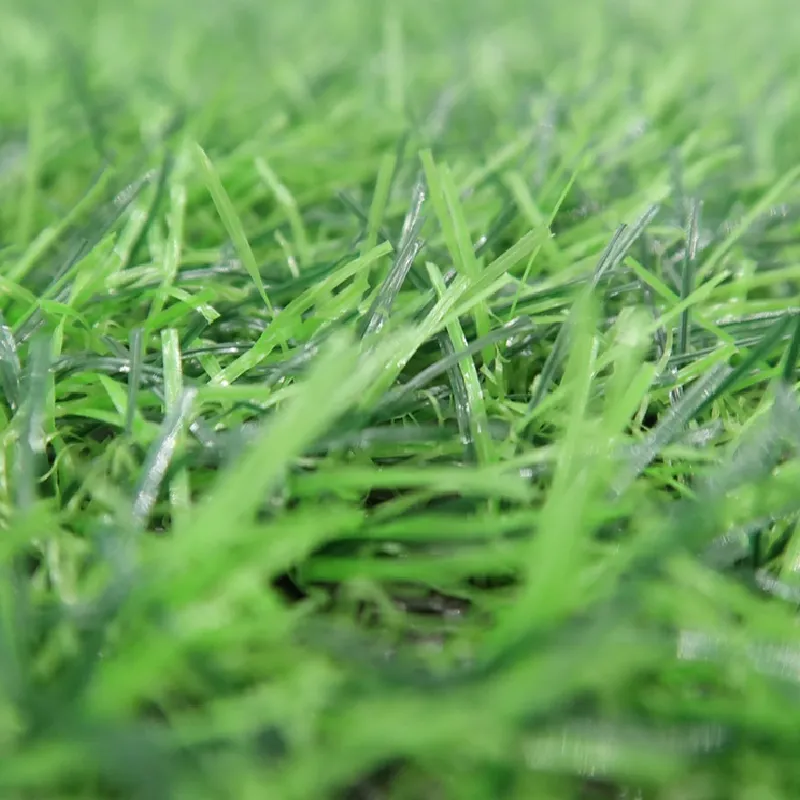
Advanced tufting machinery meticulously crafting artificial grass fibers onto backing.
Technical Specifications and Performance Parameters
Understanding the technical specifications of artificial grass is paramount for B2B stakeholders, ensuring the selected product aligns with specific project requirements, performance expectations, and aesthetic goals. These parameters dictate the product's durability, appearance, and suitability for various applications, especially in high-traffic commercial or interior settings, where specific fire safety and material composition standards often apply.
Key Technical Parameters for Artificial Grass:
- Pile Height: Measured in millimeters (mm), this is the length of the grass blades from the backing to the tip. Common ranges for `artificial grass interior` applications are 10mm to 40mm, with shorter piles offering a neat, carpet-like look suitable for offices and longer piles providing a lusher, more natural aesthetic for lounges or play areas.
- Dtex (Decitex): Represents the weight in grams of 10,000 meters of yarn. Higher Dtex values indicate thicker, more robust fibers, leading to greater resilience, durability, and resistance to matting under foot traffic. A Dtex of 6,000 to 12,000 is common for quality products.
- Gauge: The distance between two adjacent rows of stitches, typically measured in inches (e.g., 3/8", 5/8", 3/4"). A smaller gauge means higher density of tufts, resulting in a fuller, more luxurious appearance.
- Stitches per Square Meter: The total number of tufts (individual yarn bundles) per unit area. This directly influences the density and lushness of the turf. Higher stitch counts contribute to a fuller appearance and better wear resistance, especially critical in high-traffic commercial settings.
- Face Weight: The weight of the yarn per square foot (or square meter), excluding the backing. A higher face weight generally correlates with a higher quality, more durable product that retains its upright position better.
- Backing Material: As discussed in the manufacturing process, primary (woven PP) and secondary (latex or PU) backing contribute significantly to dimensional stability and tuft lock. PU backing offers superior resilience and resistance to moisture and temperature extremes, while latex offers good performance for interior uses.
- UV Stability: Measured by accelerated weathering tests (e.g., ASTM G154), this parameter indicates the turf's resistance to fading, color degradation, and material breakdown from ultraviolet radiation, ensuring long-term color vibrancy and structural integrity, even near windows or skylights.
- Fire Retardancy: An essential safety parameter for interior installations, indicating the product's resistance to ignition and flame spread, tested according to standards like EN 13501-1.
Product Specification Table: Artificial Grass For Interior Decoration
| Parameter | Specification | Benefit for Interior Use |
|---|---|---|
| Yarn Material | PE (Polyethylene) + PP (Polypropylene) | Combines softness for comfort with robust durability for high-traffic areas. |
| Pile Height | 25mm - 35mm (Customizable) | Optimal balance for a lush, natural appearance and easy maintenance. |
| Dtex | 9,000 - 10,000 | Ensures excellent fiber resilience, preventing matting and ensuring longevity. |
| Gauge | 3/8 inch | Provides a dense, luxurious feel underfoot, minimizing visible backing. |
| Stitch Rate | 160 - 180 stitches/meter | Contributes to high density and a full, natural aesthetic that resists compaction. |
| Face Weight | 1.8 - 2.2 kg/sqm | Indicates a substantial, premium product with superior durability and comfort. |
| Backing | Double-layer PP + SBR Latex / PU (Optional) | Enhanced tuft lock, dimensional stability, and prolonged lifespan; PU option for superior drainage. |
| UV Stability | >6,000 hours (ASTM G154 equivalent) | Guarantees long-term colorfastness even near windows or skylights, preventing degradation. |
| Fire Retardancy | Class Efl-s1 (EN 13501-1) | Meets essential safety standards for commercial and public interior spaces. |
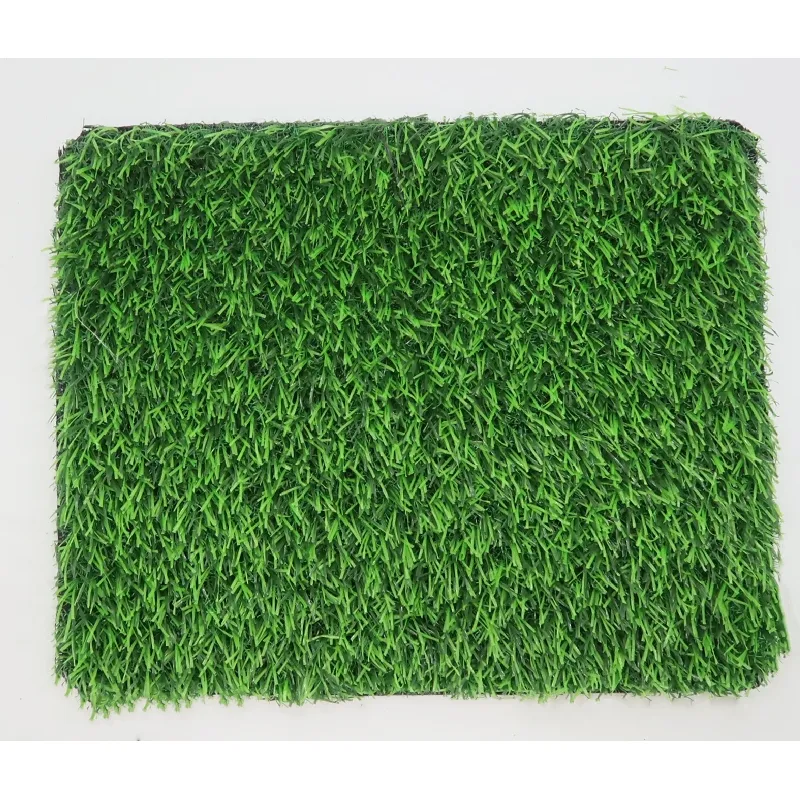
Detailed view of artificial grass fibers, highlighting texture and density.
Application Scenarios and Technical Advantages for B2B Environments
The versatility of artificial grass extends across a broad spectrum of B2B applications, from enhancing commercial aesthetics to providing functional, durable surfaces. Its inherent technical advantages make it a preferred choice over natural grass in demanding environments where maintenance, durability, and consistent appearance are critical. This includes applications in diverse target industries such as petrochemical, metallurgy, and water supply & drainage, where conventional landscaping is often impractical or costly.
Target Industries and Typical Application Scenarios:
- Retail and Commercial Spaces: Used for creating inviting storefront displays, unique interior flooring, themed zones in malls, or green walls. The `fake grass for decoration` aspect enhances customer experience and brand image, requiring zero watering or mowing and providing consistent visual appeal.
- Hospitality and Leisure: Ideal for hotel lobbies, rooftop gardens, restaurant patios, and indoor play areas. Provides a lush, green ambiance without the logistical challenges of natural turf, ensuring pristine appearance year-round while resisting heavy foot traffic.
- Corporate Offices and Educational Institutions: Employed for breakout areas, employee relaxation zones, vibrant reception areas, or indoor courtyards. `Artificial grass interior` installations promote biophilic design, proven to boost productivity and well-being, as well as offering acoustical benefits in open-plan offices.
- Event Management and Exhibitions: A popular choice for temporary installations, trade show booths, and pop-up events. Offers quick installation, portability, and a visually striking element that can be reused, reducing setup and dismantling times significantly.
- Healthcare and Wellness Facilities: Utilized in therapy gardens, sensory rooms, or non-sterile waiting areas. Provides a comforting, naturalistic environment that is hypoallergenic, easy to sanitize, and meets specific fire safety regulations.
- Industrial and Infrastructure (e.g., petrochemical, metallurgy, water supply & drainage): While often outdoor, `artificial grass` can be used for safety zones, erosion control around facilities, or aesthetically enhancing administrative areas where natural vegetation is difficult to sustain due to harsh conditions or specific industrial requirements.
Technical Advantages in B2B Contexts:
- Cost Efficiency & Energy Saving: Eliminates significant operational costs associated with natural grass maintenance, including watering, mowing, fertilizing, and pest control. For large commercial properties, annual savings on water bills alone can be substantial (up to 70% in some regions). For interior applications, it reduces the need for extensive irrigation systems or specialized lighting often required for live plants, contributing to energy conservation.
- Exceptional Durability and Wear Resistance: Engineered with high-Dtex fibers and robust backing systems, `artificial grass` withstands heavy foot traffic, making it ideal for commercial spaces like retail walkways or public gathering areas. Its resistance to crushing and matting ensures a consistent, pristine appearance without visible wear patterns, leading to a longer lifecycle and less frequent replacement.
- Consistent Aesthetics & UV Stability: Maintains a vibrant green color and uniform texture year-round, regardless of weather conditions, indoor climate, or foot traffic. Advanced UV stabilizers prevent fading, ensuring the initial aesthetic appeal is preserved for many years, even when exposed to natural light from windows or skylights.
- Low Maintenance Requirements: Requires only occasional cleaning (vacuuming or light brushing) to remove dust or debris. No need for irrigation, pesticides, herbicides, or complex drainage systems typical of natural lawns. This minimizes facility management overhead and resources, allowing staff to focus on core business operations.
- Hypoallergenic and Pet-Friendly: Does not produce pollen, making it an excellent choice for allergy sufferers in public spaces. Modern `artificial grass` products are also non-toxic, lead-free, and easy to clean, making them suitable for pet-friendly commercial environments and high-touch areas.
- Fire Retardancy: Many premium interior-grade artificial grass products are treated to be fire-retardant, meeting international safety standards (e.g., EN 13501-1 Class Efl-s1), which is crucial for public and commercial indoor installations to ensure occupant safety and regulatory compliance.
- Corrosion Resistance & Chemical Stability: Unlike natural turf that can degrade with chemical exposure, synthetic fibers are inert and resistant to most common cleaning agents, spills, and atmospheric pollutants. This ensures long-term structural integrity and appearance, especially important in industrial settings or areas with frequent cleaning.
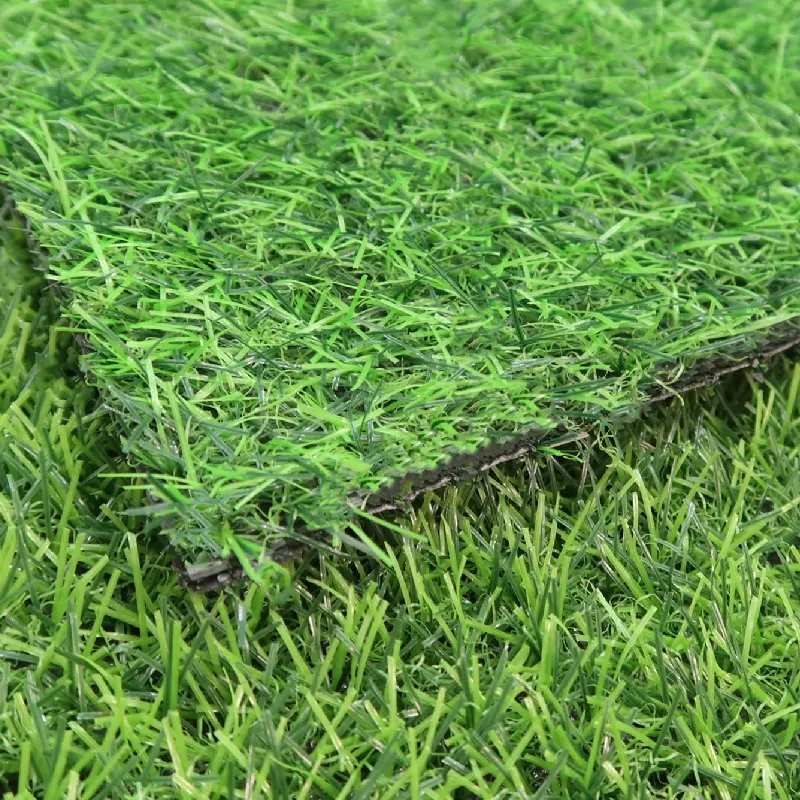
Artificial grass creating a lush, inviting indoor seating area in a commercial setting.
Vendor Comparison and Customized Solutions
Selecting the right artificial grass vendor is a critical decision for B2B procurement, impacting project budget, product quality, and long-term satisfaction. A thorough comparison based on technical capabilities, certifications, and service offerings is essential. Furthermore, the ability to provide customized solutions can be a significant differentiator for complex or unique design requirements, ensuring precise alignment with architectural and branding visions.
Comparative Analysis of Artificial Grass Providers:
| Feature/Provider | Hoyarn Grass (Example) | Vendor B (Competitor) | Vendor C (Specialty) |
|---|---|---|---|
| Product Range for Interior | Extensive, specific `artificial grass interior` lines (10-40mm pile), multi-color options | Limited, mostly adapted landscape turf (30-50mm pile), standard green only | Niche, high-end design turf (10-20mm pile, specific fashion colors) |
| Certifications | ISO 9001, ISO 14001, CE, RoHS, EN 13501-1 (Fire Safety), ASTM F1551 | ISO 9001, CE, basic UV testing | ISO 9001, REACH, specific material safety tests |
| Customization Options | Pile height, Dtex, color matching, backing material, infill advice, logo/pattern integration, specific fire retardancy levels | Limited: Pile height, basic color choice (green shades) | Extensive: Unique colors, textures, bespoke patterns, specific performance additives (higher MOQ and cost) |
| Lead Time for Standard Orders | 2-4 weeks (efficient production cycle) | 3-5 weeks (standard industry average) | 4-8 weeks (due to specialized production) |
| Warranty (Residential/Commercial) | 10-year UV stability, 8-year wear, manufacturing defect | 8-year UV stability, 6-year wear | 12-year UV stability, 10-year wear (with premium pricing and strict maintenance) |
| Customer Support & After-Sales | Dedicated project managers, installation guides, technical support, maintenance advice | General sales support, basic FAQs online | Design consultation, premium installation network, specialized cleaning services |
Customized Solutions for Unique Project Demands:
Many B2B projects require more than off-the-shelf solutions. Leading `fake grass for decoration` manufacturers offer extensive customization options to meet specific aesthetic, functional, and branding needs. This ensures the artificial grass integrates seamlessly with the overall design and performance objectives of any commercial or institutional space. Customization capabilities often include:
- Color Matching: Beyond traditional green, `artificial grass` can be produced in a vast array of colors, including corporate brand colors, vibrant accent hues, or subtle earth tones to align perfectly with interior design palettes or specific thematic requirements.
- Pile Height and Density Variation: Tailoring these parameters allows for specific tactile experiences and visual effects, from short, dense carpet-like surfaces ideal for high-traffic walkways to longer, more luxurious textures suitable for lounges or recreational zones, precisely controlling the feel and durability.
- Infill Selection: While not always necessary for purely interior use, specialized infills (e.g., anti-microbial, cooling, or performance-enhancing rubber granules) can be specified for specific performance requirements, high-impact areas, or to further enhance blade uprightness.
- Pattern and Logo Integration: Bespoke designs, corporate logos, directional markers, or intricate patterns can be seamlessly integrated into the `artificial grass` surface during the manufacturing or installation process, providing a highly personalized and branded aesthetic that reinforces corporate identity.
- Specialized Backing: For specific acoustic needs (e.g., sound dampening in offices) or compatibility with particular floor types, alternative backing materials like enhanced foam padding for comfort or specialized non-slip coatings can be incorporated, offering tailored functional benefits.
Partnering with a manufacturer capable of delivering these tailored solutions ensures that the artificial grass installation is not just a functional element, but an integral part of the overall design vision, meeting precise specifications and enhancing the uniqueness of any commercial or institutional space while adhering to relevant safety and performance standards.
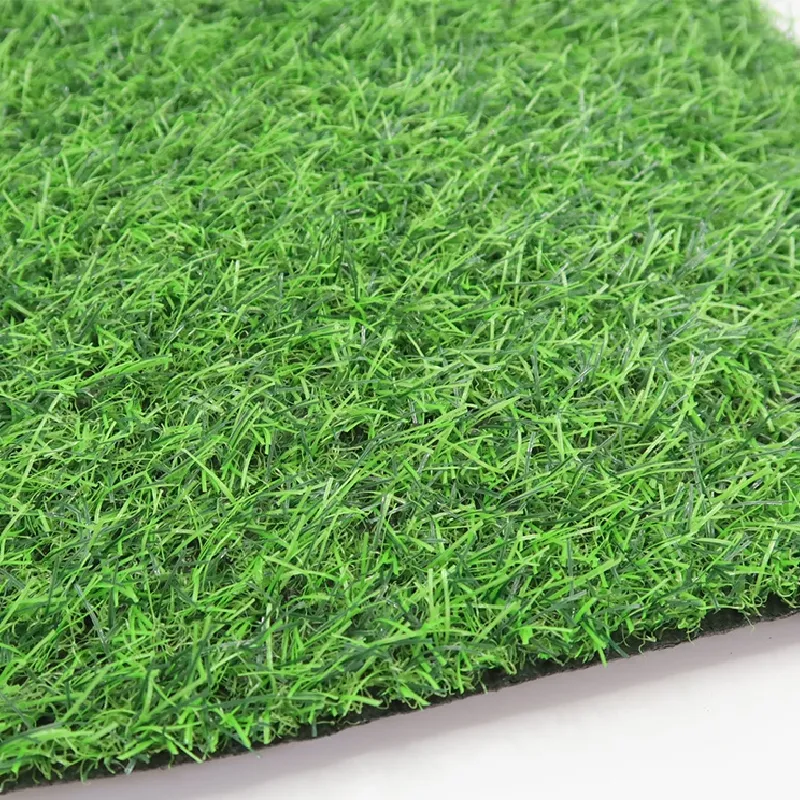
Customized artificial grass installation, demonstrating branding potential in commercial settings.
Application Case Studies and Customer Experience
Real-world application case studies provide tangible evidence of the value and performance of artificial grass in commercial and interior settings. These examples highlight successful implementations and offer insights into the practical benefits experienced by various B2B clients, demonstrating how synthetic turf solutions address specific challenges and deliver measurable improvements.
Case Study 1: Corporate Office Biophilic Design Integration
- Client: Global Tech Solutions, Inc. (Headquarters, New York)
- Challenge: To create an inviting, low-maintenance green space in a central atrium and several indoor breakout zones across a multi-story office building, promoting employee well-being and a connection to nature (biophilia, as described by Heerwagen & Orians, 1993). Natural grass was deemed impractical due to demanding light requirements, complex irrigation, and high ongoing maintenance costs.
- Solution: Installation of 1,500 sqm of premium `artificial grass interior` with a 30mm pile height and high Dtex rating (9,500 Dtex), specifically designed for interior aesthetics and durability. The turf was integrated with natural stone pathways, bespoke planters, and ergonomic seating areas. The product met EN 13501-1 Class Efl-s1 fire safety standards.
- Outcome: The space was transformed into a vibrant, tranquil environment that significantly enhanced the office ambiance. Employee feedback reported significantly increased satisfaction with the office aesthetics and improved mood, with 70% of employees stating the green spaces positively impacted their work-day. Maintenance costs were minimal, primarily consisting of weekly vacuuming, representing an 80% reduction compared to projected natural turf upkeep. The client noted a tangible uplift in staff morale and a perceived reduction in stress levels.
Case Study 2: High-Traffic Retail Showroom Flooring
- Client: Urban Lifestyle Retailer (Flagship Store, London)
- Challenge: To create a visually striking and highly durable floor display for a new collection of outdoor furniture and home decor. The surface needed to withstand constant foot traffic from hundreds of customers daily while maintaining a fresh, natural aesthetic that complements the products. Conventional flooring lacked the desired "outdoor" feel.
- Solution: Implementation of a robust `fake grass for decoration` product with a 25mm pile height, high stitch rate (180 stitches/meter), and superior tuft lock, specifically engineered for commercial showroom environments. The design included bespoke cutting to fit intricate display patterns and seamless installation over existing hard flooring using specialized adhesive.
- Outcome: The `artificial grass` provided an excellent, engaging backdrop, enhancing the product display and drawing significant customer attention. After 24 months of heavy use, the turf showed minimal signs of wear or matting, exceeding the client's expectations for durability. Customer engagement metrics around the grassed display areas increased by 40%, directly impacting product interest and sales. The retailer also reported positive feedback on the store's unique and inviting atmosphere.
Customer Feedback:
"Our partnership with Hoyarn Grass for the interior landscaping of our new corporate campus was exceptional. The `artificial grass` they provided not only looks incredibly realistic but has proven to be incredibly durable and virtually maintenance-free. It truly brought our vision of a 'green oasis' indoors to life, enhancing employee morale and attracting positive comments from all our visitors. The low total cost of ownership has been a significant benefit." - Facilities Director, Ascent Innovations Group.
"We needed a versatile, safe, and visually appealing surface for our indoor children's play zones. The `artificial grass` solution offered by Hoyarn met all our stringent safety standards, including fire retardancy and non-toxic material certifications, and our specific design specifications for a soft, engaging play surface. The children love the natural feel, and our operations team appreciates the easy cleaning and long-term resilience, which has reduced our operational workload." - Operations Manager, PlayWorld Entertainment Centers.

Artistic use of artificial grass in a modern interior, creating a focal point.
Trustworthiness: FAQs, Lead Time, Warranty & Support
Establishing trust and reliability is paramount in B2B partnerships. This section addresses common inquiries, operational logistics, and commitment to post-sales support, underscoring our dedication to client satisfaction and long-term value for `artificial grass` solutions.
Frequently Asked Questions (FAQs):
Q1: Is artificial grass safe for indoor environments, particularly for children and pets?
A1: Absolutely. Our interior-grade artificial grass products are manufactured using non-toxic, lead-free materials, often certified by RoHS or REACH standards. They are hypoallergenic, eliminating pollen-related allergens, and are easy to clean, making them safe for all occupants, including children and pets. Crucially, specific fire retardancy ratings (e.g., EN 13501-1) are achieved for indoor applications, ensuring compliance with commercial building safety regulations.
Q2: How is artificial grass cleaned in an indoor setting?
A2: Indoor `artificial grass` is remarkably easy to maintain. For general debris and dust, a standard vacuum cleaner or a soft-bristle brush is sufficient. For liquid spills, a damp cloth with mild soap and water typically cleans the area effectively. For tougher stains, specialized turf cleaners or diluted household cleaning agents can be used, though rarely needed for typical interior use. Its non-absorbent fibers prevent staining and odors from setting in.
Q3: Can `artificial grass interior` be installed over any type of flooring?
A3: Yes, `artificial grass interior` can be installed over most stable, flat, and dry surfaces, including concrete, plywood, tiles, or even existing short-pile carpet. The key is a clean, level substrate. For temporary installations, it can be laid directly with seam tape. For permanent fixtures in commercial settings, adhesive bonding is recommended to ensure stability and a seamless finish. Professional installation is always advised for optimal results.
Q4: What is the expected lifespan of your interior artificial grass products?
A4: Our interior `artificial grass` is engineered for exceptional durability and longevity. With proper installation and minimal routine maintenance, B2B clients can confidently expect a service life of 8-15 years, often exceeding 10 years in typical indoor commercial environments. Our robust material composition and UV stabilization (even for interior products, considering window exposure) contribute to this extended lifespan, which is supported by our comprehensive warranty.
Lead Time and Fulfillment:
We understand the critical importance of timely project completion for our B2B clients. For standard artificial grass orders, our typical lead time is 2-4 weeks from order confirmation to dispatch. This efficient timeline includes all stages of production, rigorous quality checks, and careful packaging for shipment. For large-scale or highly customized projects, a detailed production and delivery schedule will be collaboratively developed, generally ranging from 4-8 weeks, depending on complexity, volume, and specific customization requirements. We maintain robust supply chain logistics and partner with reliable global carriers to ensure efficient and predictable fulfillment worldwide.
Warranty Commitments:
Our unwavering commitment to product quality and client confidence is backed by comprehensive, industry-leading warranty programs. All our artificial grass for interior decoration products come with an extensive warranty designed to protect your investment:
- 10-Year UV Stability Warranty: Guarantees the color and material integrity of the turf against significant fading, discoloration, or degradation due to ultraviolet light exposure, even from prolonged sunlight through windows.
- 8-Year Wear Warranty: Covers excessive wear and tear, matting, or significant loss of pile height under normal commercial usage conditions, ensuring the product retains its functional and aesthetic properties for an extended period.
- Manufacturing Defect Warranty: Covers any structural or material defects arising from the manufacturing process for the entire warranty period, providing peace of mind from production to installation.
Full warranty terms and conditions are readily available upon request and are transparently communicated, designed to provide peace of mind for long-term B2B investments.
Customer Support and After-Sales Service:
Our dedication to our B2B partners extends far beyond product delivery. We offer comprehensive customer support and after-sales service designed to assist our clients at every stage of their project and throughout the product's lifespan:
- Dedicated Account Management: Each B2B client is assigned a dedicated project manager who serves as a single point of contact, ensuring seamless communication, personalized service, and efficient project execution from initial inquiry to post-installation.
- Expert Technical Consultation: Our team of highly experienced professionals provides in-depth technical advice on product selection, precise installation methods, optimal substrate preparation, and integration with other design elements.
- Comprehensive Installation Guides and Resources: We provide detailed documentation, best practice guides, and video resources to facilitate professional installation by your teams or certified contractors.
- Ongoing Maintenance Support: We offer expert advice and tailored recommendations for cleaning, upkeep, and minor repairs to maximize the lifespan and preserve the pristine appearance of the turf.
- Rapid Response and Issue Resolution: A firm commitment to timely responses for any inquiries, technical support needs, or warranty claims, ensuring minimal disruption to your operations.

Hoyarn Grass ensures quality with rigorous testing and certifications.
References
- MarketsandMarkets. (2020). Artificial Turf Market by Material, Infill Material, Application (Sports, Leisure & Landscaping), and Region - Global Forecast to 2027.
- European Standard EN 13501-1: Fire classification of construction products and building elements - Part 1: Classification using data from reaction to fire tests.
- American Society for Testing and Materials (ASTM) F1551: Standard Test Methods for Composite Properties of Artificial Turf Systems.
- ISO 9001:2015 - Quality management systems - Requirements. International Organization for Standardization.
- Heerwagen, J. H., & Orians, G. H. (1993). Humans, Habitats, and Aesthetics. In The Biophilia Hypothesis (pp. 138-172). Island Press.
-
Durable, Eco-Friendly Turf for Balcony | Enhance Your Urban Space
NewsNov.24,2025
-
Turf Between Pavers: Sustainable Green Paving Solutions for Modern Urban Spaces
NewsNov.24,2025
-
Discover the Benefits of Turf and Pavers Backyard | Sustainable Outdoor Design
NewsNov.24,2025
-
Top Quality Artificial Grass – Sustainable, Durable, and Stylish Turf Solutions
NewsNov.24,2025
-
Durable and Eco-Friendly Thick Artificial Grass Solutions | Hoya Grass
NewsNov.24,2025
-
Synthetic Turf: Sustainable Green Solutions for Sports, Industry & Urban Living
NewsNov.24,2025
Products categories



